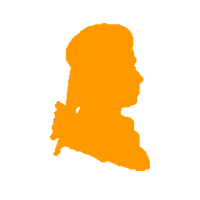Preface
Wolfgang Schindlöcker (21. 08. 1786 Wien – 18.
01.1864 Würzburg) was born in a family of musicians.
He learnt violin from his father Michael Schindlöcker,
trumpetist and violinist of the Imperial chamber music
Wien, and cello from his uncle Philipp Schindlöcker,
the principal cellist of Empress Maria Theresia.
Already in the age of 15 he started playing in the
public and has been engaged in the court theatre. In
1807 he became chamber musician in the grand ducal
chapel in Wür...(+)
Preface
Wolfgang Schindlöcker (21. 08. 1786 Wien – 18.
01.1864 Würzburg) was born in a family of musicians.
He learnt violin from his father Michael Schindlöcker,
trumpetist and violinist of the Imperial chamber music
Wien, and cello from his uncle Philipp Schindlöcker,
the principal cellist of Empress Maria Theresia.
Already in the age of 15 he started playing in the
public and has been engaged in the court theatre. In
1807 he became chamber musician in the grand ducal
chapel in Würzburg. When in 1815 the court music in
Würzburg was dissolved, all musicians formally went
into pension, but still had to do service in the court
church. In 1852 they were finally retired and in 1864
Schindlöcker died as the last surviving court
musician.
Wolfgang Schindlöcker was an outstanding cellist, and
taught his instrument from 1812 – 1825 at the
Academic Music Institute Würzburg. In the years from
1828 to 1835 he performed concert tours through North
America. Schindlöcker composed several pieces of
chamber music, some of which have been printed during
his lifetime:
- Grand Duo d minor op. 5 for 2 Cellos, Johann André,
Offenbach. “Dedicated to his pupil Gm.
Steigerwald”. Available digitally at IMSLP
- ‘Duetto 2’ for 2 Cellos, Rism ID no.
1001136881
- Duo A major for violin and cello. RISM ID no
1001136456
- Sonatas C major for 2 cellos , RISM ID no 1001001057.
Digitally available IMSLP
- 3 Adagios and Fugue for 2 Cellos . Kunz WW 115a,
Deutscher Musikrat, literature list for “Jugend
musiziert”
- Fantasie and Polonaise for flute, violin, 2 violas
and cello, Johann André, Offenbach 1819
- Divertimento F major or “Serenade pour Flute, Cor
de Bassette, Alto et Violoncelle dedié a son Ami
François Steigerwald ouvre 6”. Johann André,
Offenbach 1823
- Quartetto no. 2 for flute, basset horn, viola and
cello
- Quartetto no. 3 for flute, basset horn, viola and
cello
Here the Quartetto no. 2 is presented. It is based on a
manuscript, originally preserved in the music
collection “Fürstlich
Löwenstein-Wertheim-Freudenbergsche Musiksammlung”
in Wertheim. We are grateful to Heinrich Fink for a
copy of this work. The copy consists of 4 hand written
single parts. These parts were partially inconsistent
and contained errors in the harmonies. They have been
tacitly improved. Since the basset horn is a rare
instrument, we have prepared a part for clarinet in B
in lieu of the basset horn.The quartet no. 2 is very
comprehensive, therefore we have divided it in two
parts. Here part 1 (movements 1 - 7) is presented.
Halle/Saale and Arnsberg July 2022
Dietrich Demus and Thomas Grass
-

 Demus, Dietrich (1935 - )
Demus, Dietrich (1935 - )






